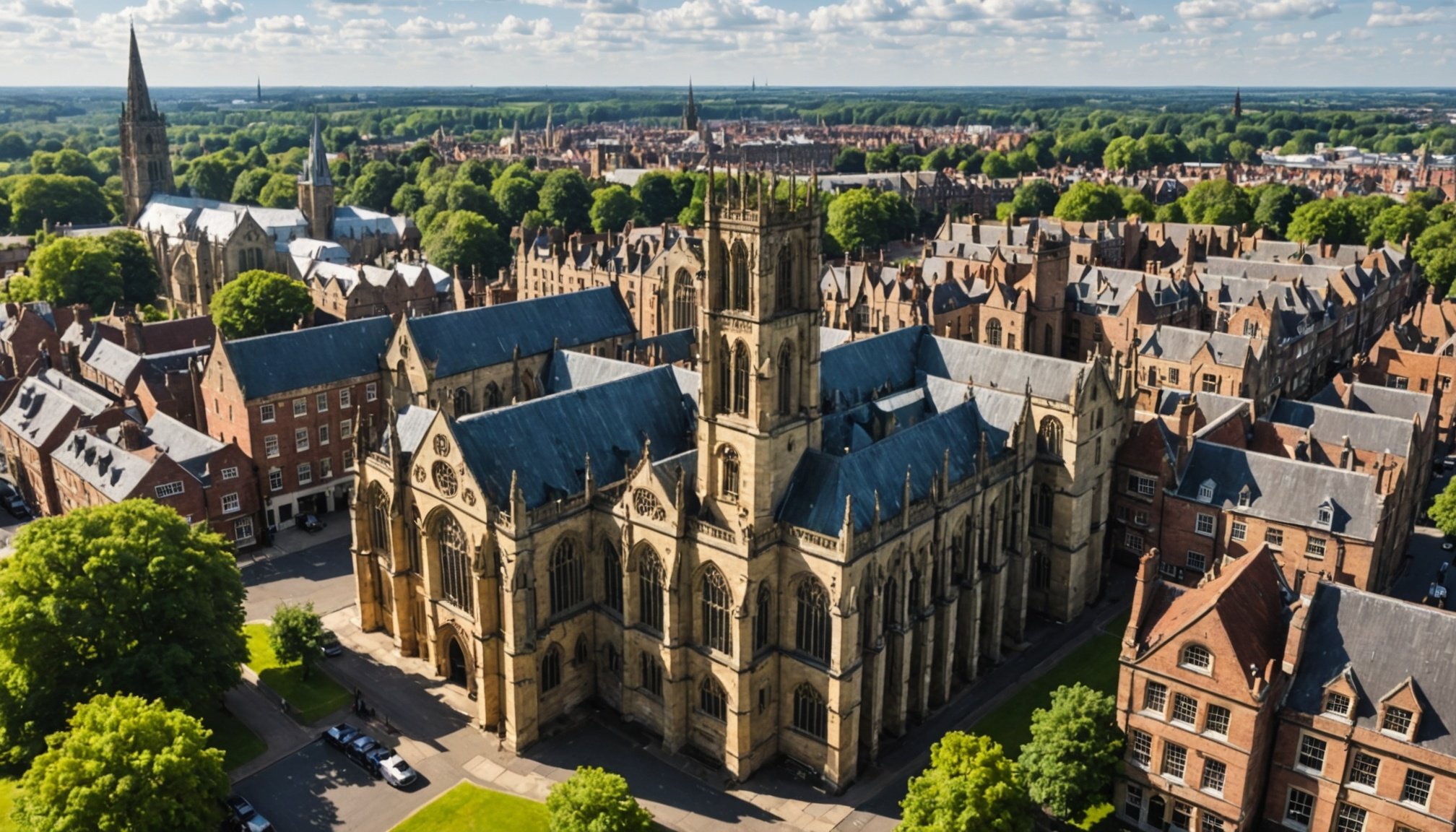Understanding Unique Insurance Needs for Historic Properties
Historic properties bring with them a distinct set of challenges and intricacies when it comes to securing essential insurance. These properties often sit in locations adjacent to or near other historic landmarks, increasing the potential risks. For instance, if a property’s design is intricately linked or physically close to a landmark, it might be subject to higher risk assessments due to tourist foot traffic or structural vulnerabilities of surrounding buildings.
Tailoring insurance coverage is crucial for addressing the unique features of historic properties. Unlike modern buildings, these properties may possess antique elements like stained-glass windows or original woodwork which require specialized protection. Standard policies may not adequately cover the costs of preserving these historic attributes, underscoring the need for a bespoke insurance plan.
Also read : Key Influences on Securing Construction Loans for Waterfront Properties in the UK
Moreover, a property’s status as a historic landmark could significantly impact insurance options. On one hand, this designation might increase the property’s value, thereby affecting insurance premiums. On the other hand, certain insurance providers might offer bespoke products that specifically cater to preserving the integrity of landmark properties. Understanding these implications allows property owners to make informed decisions, ensuring they receive comprehensive protection that honours the property’s historical significance and unique requirements.
Types of Insurance Coverage Available
Navigating historic property insurance options can seem daunting, yet understanding the distinct types simplifies this task.
Also to read : Essential Guide: How to Safeguard Insurance for Your Grade II Listed Property in Wales
Homeowners Insurance Tailored for Historic Properties
Standard homeowners insurance often falls short in adequately covering historic properties due to their unique features and high restoration costs. Thus, policies tailored specifically for historic homes are essential. These policies typically cover the full replacement cost, allowing for repairs and restorations that maintain a property’s historical integrity. Insurers evaluate the detailed craftsmanship and authentic materials that define historic properties, ensuring their value is properly considered.
Specialty Insurance Products for Unique Risks
Historic properties present unique risks that standard insurance might overlook, necessitating specialty insurance products. These products cover threats like vandalism, deterioration due to age, and rare construction techniques that older homes often feature. Specialty products can provide broader coverage, ensuring owners need not compromise on preserving historical authenticity following damage.
Role of Umbrella Insurance for Property Owners
Umbrella insurance serves as an additional layer of security for property owners, covering claims that exceed standard policy limits. This is crucial for historic property owners who face unpredictable or substantial claims threats. In essence, umbrella policies bridge the gap between conventional coverage limits and potential liabilities, offering peace of mind and financial protection in preserving historical heritage.
Evaluating Property Risks near Historic Landmarks
Understanding risk evaluation for historic properties near iconic landmarks is crucial for homeowners, prospective buyers, and investors. Several key factors influence this assessment, beginning with the structural integrity of the building. Properties adjacent to historic landmarks may require more frequent structural assessments to highlight any potential vulnerabilities.
Historic preservation is another significant aspect, as structures with cultural importance demand preservation efforts that might influence renovation or alteration plans. When evaluating risks, it’s crucial to consider these regulations, which can impact the cost and feasibility of property modifications.
Another layer to risk assessment involves natural disaster considerations. Properties located close to historic landmarks may face elevated risks of damage from events such as earthquakes, floods, or fires. This impact varies depending on the geographical area and the protective measures in place for both the property and the landmark.
To mitigate these risks, a comprehensive assessment combining structural inspection, historic preservation requirements, and geographical disaster likelihood is vital. This holistic approach not only safeguards the property’s value and integrity but also ensures compliance with preservation standards, ultimately making the investment sound and secure.
Case Studies of Insurance Claims in Historic Contexts
Exploring the world of insurance claims for historic properties offers a unique glimpse into how preservation efforts and unexpected events intertwine. In historical contexts, these claims often reflect challenges stemming from the delicate balance between restoring authenticity and mitigating damage.
Notable Claims and Lessons Learned
Significant cases reveal that when insurance claims for historic properties arise, insurers and property owners face unique challenges. Notable instances highlight the importance of accurately valuating historical materials and craftsmanship. In one case, the ornate woodwork of a 19th-century mansion was damaged, and the claim underscored the high costs and expertise required to restore such artisanal work. From these cases, a vital lesson emerges—the necessity of detailed documentation and ongoing assessments to ensure precise insurance coverage.
Analysis of Claims Related to Preservation Damage
Preservation efforts sometimes unintentionally lead to damage, prompting complex claims. Consider a situation where an enthusiastic restoration task caused foundational shifts in a centuries-old building. Such activities resulted in unforeseen damage claims, emphasizing the need for careful planning and skilled restoration practices to prevent additional harm.
Insurance Company Responses to Claims for Historic Properties
When claims surface, insurance companies often engage specialised assessors to evaluate damages. Their response might include deploying experts who understand historical architecture’s nuances. By doing so, insurers help preserve cultural heritage while managing financial risks effectively.
Local Regulations and Preservation Concerns
Navigating the intricate landscape of York Historic Preservation Regulations is vital for property owners, particularly concerning insurance needs. These regulations impose specific preservation laws, significantly influencing insurance coverage. When owning property within a historically preserved area, it’s essential to understand that these laws mandate maintaining the property’s original structure and aesthetics. This obligation can lead to higher insurance premiums due to the additional costs associated with using specialised materials and skilled labour to adhere to preservation requirements.
The intricate interaction between regulatory compliance and insurance policy adjustments is crucial. Insurance companies evaluate these regulations when determining coverage, often reflecting increased repair or replacement costs in your policy. Hence, compliance with these local regulations frequently necessitates policy updates or even specialized insurance products that cater to the unique needs of historically significant properties.
Moreover, owners must consider the broader significance of preservation laws for insurance decisions. Ensuring your coverage adequately addresses potential regulatory pitfalls is not merely about safeguarding a building but preserving the historical legacy embedded within. Understanding and engaging with York Historic Preservation Regulations ensures that your insurance policies are not just compliant but effectively aligned with both preservation goals and financial protection strategies.
Recommendations for Insurers and Property Owners
Preserving historic properties demands meticulous insurance recommendations tailored to these charming treasures. Choosing the right insurer involves evaluating their experience with historic assets. Not all insurers possess expertise in handling the unique intricacies associated with insured historic properties. Hence, verifying the provider’s track record and understanding in this specialised field is crucial.
Best Practices for Selecting an Insurance Provider
Look for providers with a dedicated focus on historic properties. This specialised knowledge can be pivotal when addressing the needs of ageing structures. A competitive advantage can be gained by comparing premium quotes, coverage flexibility, and client reviews, ensuring a well-rounded view of potential insurers.
Guidelines for Property Owners on Maintaining Insurance Coverage
For property owners, maintaining affordable insurance coverage often means consistent upkeep of the historic property. Regular assessments and proactive repairs can prevent extensive damage and potential coverage disputes. Understanding your policy’s exclusions and limits is equally vital in protecting the property effectively.
Expert Opinions on Fostering Relationships with Underwriters
Successful relationships with underwriters can be fostered through clear communication and transparency. Experts recommend openly discussing any restoration plans or modifications to the property. This proactive approach ensures that insurance coverages are updated, and emerging risks are adequately managed. Engaging with underwriters about any changes helps maintain a mutual understanding.











